BIPV Market Development: International Technological Innovation System Analysis
Abstract
1. Introduction
2. Methodology
2.1. General Approach
2.2. Brief Introduction to Technological Innovation System (TIS) Theory and Analysis
2.3. Common Principles of the Developed TIS Analysis
3. Results
3.1. Social Aspects of BIPV
3.2. The BIPV Market Status
3.2.1. A Niche Market
3.2.2. Market Segmentation According to the BIPV Application
3.2.3. Trends
3.3. The PV Industry Role and Perspective
3.4. The Building Sector Perspective: Concerns and Needs
3.5. Institutions and Policymakers’ Role
3.5.1. Legislation Impact
3.5.2. BIPV-Specific Support
4. Discussion of Results and Recommendations to Policymakers
5. Conclusions
Author Contributions
Funding
Data Availability Statement
Acknowledgments
Conflicts of Interest
Abbreviations
| BAPV | Building-Added Photovoltaic(s) |
| BIM | Building Information Modelling |
| BIPV | Building-Integrated Photovoltaic(s) |
| CdTe | Cadmium Telluride |
| CIGS | Indium–Gallium–Copper Selenide |
| c-Si | Crystalline Silicon |
| EU | European Union |
| EPBD | Energy Performance of Buildings Directive (European Union) |
| H:a-Si | Hydrogenated Amorphous Silicon |
| IEA | International Energy Agency |
| IEA-PVPS | Photovoltaic Power System Programme of the International Energy Agency |
| IEC | International Electrotechnical Commission |
| m-Si | Monocrystalline Silicon |
| TIS | Technological Innovation System |
References
- Berger, K.; Cueli, A.B.; Boddaert, S.; Del Buono, M.; Delisle, V.; Fedorova, A.; Frontini, F.; Hendrick, P.; Inoue, S.; Ishii, H.; et al. International Definitions of ‘BIPV’. Report IEA-PVPS T15-04: 2018; International Energy Agency: Paris, France, 2018; Available online: http://www.iea-pvps.org/index.php?id=501 (accessed on 12 May 2025).
- IEC 63092-1; 2020 Photovoltaics in Buildings—Part 1: Requirements for Building-Integrated Photovoltaic Modules. International Electrotechnical Commission: Geneva, Switzerland, 2020.
- Martín-Chivelet, N.; Kapsis, K.; Wilson, H.R.; Delisle, V.; Yang, R.; Olivieri, L.; Polo, J.; Eisenlohr, J.; Roy, B.; Maturi, L.; et al. Building-Integrated Photovoltaic (BIPV) products and systems: A review of energy-related behavior. Energy Build. 2022, 262, 111998. [Google Scholar] [CrossRef]
- Awuku, S.A.; Bennadji, A.; Muhammad-Sukki, F.; Sellami, N. Myth or gold? The power of aesthetics in the adoption of building integrated photovoltaics (BIPVs). Energy Nexus 2021, 4, 100021. [Google Scholar] [CrossRef]
- Vroon, T.; Teunissen, E.; Drent, M.; Negro, S.O.; van Sark, W.G.J.H.M. Escaping the niche market: An innovation system analysis of the Dutch building integrated photovoltaics (BIPV) sector. Renew. Sustain. Energy Rev. 2022, 155, 111912. [Google Scholar] [CrossRef]
- Osseweijer, F.J.W.; van den Hurk, L.B.P.; Teunissen, E.J.H.M.; van Sark, W.G.J.H.M. A comparative review of building integrated photovoltaics ecosystems in selected European countries. Renew. Sustain. Energy Rev. 2018, 90, 1027–1040. [Google Scholar] [CrossRef]
- van Noord, M.; Kovacs, P.; Karltorp, K.; Vroon, T. Guide for Technological Innovation System Analysis for Building-Integrated Photovoltaics. Report IEA-PVPS T15-16:2023; International Energy Agency: Paris, France, 2023; Available online: https://iea-pvps.org/wp-content/uploads/2023/08/Report_IEA-PVPS_T15-16-2023-Guide-for-Tech-Innovation-Systems-Analysis-for-Building-Integrated-PV.pdf (accessed on 4 May 2025).
- van Noord, M.; Kovacs, P.; Unger, M.; Warneryd, M.; Stridh, B. Analysis of the Technological Innovation System for BIPV in Sweden. Report IEA-PVPS T15-18:2024; International Energy Agency: Paris, France, 2023; Available online: https://iea-pvps.org/key-topics/analysis-of-the-technological-innovation-system-for-bipv-in-sweden/ (accessed on 6 February 2025).
- Bernsen, O. Analysis of the Technological Innovation System for BIPV in the Netherlands-Report IEA-PVPS T15-22:2024; International Energy Agency: Paris, France, 2024; Available online: https://iea-pvps.org/wp-content/uploads/2024/08/IEA-PVPS-T15-2024-REPORT-Netherlands-TIS-BIPV-.pdf (accessed on 6 February 2025).
- Tabakovic, M.; Savic, S.; Türk, A.; Schostal, T.; Eder, G.; Berger, K.; Moor, D.; Gaisberger, L.; Grobbauer, M.; Fechner, H. Analysis of the Technological Innovation System for BIPV in Austria. Report IEA-PVPS T15-21:2024; International Energy Agency: Paris, France, 2024; Available online: https://iea-pvps.org/wp-content/uploads/2024/09/IEA-PVPS-T15-21-2024-REPORT-Austria-TIS-BIPV.pdf (accessed on 12 May 2025).
- Tilli, F.; Baggini, A. Analysis of the Technological Innovation System for BIPV in Italy. Report IEA-PVPS T15-17:2024; International Energy Agency: Paris, France, 2024; Available online: https://iea-pvps.org/wp-content/uploads/2024/03/IEAPVPS-T15-17-2024-REPORT-Italy-TIS-Analysis-BIPV-1.pdf (accessed on 12 May 2025).
- Martín-Chivelet, N.; García, L.; Martín-Caamaño, E.; Racero, D. Analysis of the Technological Innovation System for BIPV in Spain. Report IEA-PVPS T15-13:2022; International Energy Agency: Paris, France, 2022; Available online: https://iea-pvps.org/wp-content/uploads/2022/10/Report-IEA-PVPS-T15-13-2022-Spain-TIS-BIPV.pdf (accessed on 25 April 2025).
- Yang, R.J.; Weerasinghe, R.P.N.; Gunarathna, M.A.C.L.; Wijeratne, W.M.P.U. Analysis of the Technological Innovation System for BIPV in Australia. Report IEA-PVPS T15-19:2024; International Energy Agency: Paris, France, 2024; Available online: https://iea-pvps.org/wp-content/uploads/2024/05/IEA-PVPS-T15-19-2024.pdf (accessed on 12 May 2025).
- Markard, J.; Truffer, B. Technological innovation systems and the multi-level perspective: Towards an integrated framework. Res. Policy 2008, 37, 596–615. [Google Scholar] [CrossRef]
- The Social Shaping of Technology; Mackenzie, D., Wajcman, J., Eds.; Open University Press: London, UK, 1985. [Google Scholar]
- Bergek, A. Technological innovation systems: A review of recent findings and suggestions for future research. In Handbook of Sustainable Innovation; Edward Elgar Publishing: Cheltenham, UK, 2019; pp. 200–218. [Google Scholar] [CrossRef]
- Carlsson, B.; Elg, L.; Jacobsson, S. Reflections on the Co-evolution of Innovation Theory, Policy and Practice: The Emergence of the Swedish Agency for Innovation Systems. In The Theory and Practice of Innovation Policy; Edward Elgar Publishing: Cheltenham, UK, 2010. [Google Scholar] [CrossRef]
- Jacobsson, S.; Bergek, A. Transforming the energy sector: The evolution of technological systems in renewable energy technology. Ind. Corp. Chang. 2004, 13, 815–849. [Google Scholar] [CrossRef]
- Hekkert, M.P.; Suurs, R.A.A.; Negro, S.O.; Kuhlmann, S.; Smits, R.E.H.M. Functions of innovation systems: A new approach for analysing technological change. Technol. Forecast. Soc. Change 2007, 74, 413–432. [Google Scholar] [CrossRef]
- Bergek, A.; Jacobsson, S.; Carlsson, B.; Lindmark, S.; Rickne, A. Analyzing the functional dynamics of technological innovation systems: A scheme of analysis. Res. Policy 2008, 37, 407–429. [Google Scholar] [CrossRef]
- Sawulski, J.; Gałczyński, M.; Zajdler, R. Technological innovation system analysis in a follower country–The case of offshore wind in Poland. Environ. Innov. Soc. Transit. 2018, 33, 249–267. [Google Scholar] [CrossRef]
- Chung, C.C. Technological innovation systems in multi-level governance frameworks: The case of Taiwan’s biodiesel innovation system (1997–2016). J. Clean. Prod. 2018, 184, 130–142. [Google Scholar] [CrossRef]
- Suurs, R.A.A.; Hekkert, M.P. Cumulative causation in the formation of a technological innovation system: The case of biofuels in the Netherlands. Technol. Forecast. Soc. Change 2009, 76, 1003–1020. [Google Scholar] [CrossRef]
- Edsand, H.E. Identifying barriers to wind energy diffusion in Colombia: A function analysis of the technological innovation system and the wider context. Technol. Soc. 2017, 49, 1–15. [Google Scholar] [CrossRef]
- Cherp, A.; Vinichenko, V.; Jewell, J.; Suzuki, M.; Antal, M. Comparing electricity transitions: A historical analysis of nuclear, wind and solar power in Germany and Japan. Energy Policy 2016, 101, 612–628. [Google Scholar] [CrossRef]
- Zheng, J.; Chen, L. A “U-shaped” Relationship between Energy Transition and Technological Innovation. In Proceedings of the 2024 International Conference on Digital Economy and Computer Science, Xiamen, China, 20–22 September 2024; pp. 73–79. [Google Scholar] [CrossRef]
- Hellsmark, H. Teknologiska Innovationssystem Inom Energiområdet En Praktisk Vägledning Till Identifiering Av. 2014. Available online: https://publications.lib.chalmers.se/records/fulltext/218305/local_218305.pdf (accessed on 24 February 2025).
- Vico, E.P. An in-depth study of direct and indirect impacts from the research of a physics professor. Sci. Public Policy 2014, 41, 701–719. [Google Scholar] [CrossRef]
- Wieczorek, A.J.; Hekkert, M.P. Systemic instruments for systemic innovation problems: A framework for policy makers and innovation scholars. Sci. Public Policy 2012, 39, 74–87. [Google Scholar] [CrossRef]
- IEA. Renewables 2024. Analysis and Forecast to 2030; International Energy Agency: Paris, France, 2024; Available online: https://iea.blob.core.windows.net/assets/45704c88-a7b0-4001-b319-c5fc45298e07/Renewables2024.pdf (accessed on 15 June 2025).
- Masson, G.; Kaizuka, I. IEA PVPS Report-Trends in Photovoltaic Applications 2020. Report IEA-PVPS T1-38:2020; International Energy Agency: Paris, France, 2020; Available online: https://iea-pvps.org/wp-content/uploads/2020/11/IEA_PVPS_Trends_Report_2020.pdf (accessed on 24 May 2024).
- Philipps, S.; Warmuth, W. Photovoltaics Report-May 2025. Available online: https://www.ise.fraunhofer.de/content/dam/ise/de/documents/publications/studies/Photovoltaics-Report.pdf (accessed on 20 July 2025).
- Donoso, J.; Behar, M.; Miranda, A. National Survey Report of PV Power Applications in SPAIN 2023 PVPS Task 1 Strategic PV Analysis and Outreach What is IEA PVPS TCP? What is IEA PVPS Task 1; International Enery Agency: Paris, France, 2023; Available online: https://iea-pvps.org/wp-content/uploads/2024/12/IEA-PVPS-2023-National-Survey-Report-Spain.pdf (accessed on 14 February 2025).
- International Energy Agency. National Survey Report of PV Power Applications in Italy 2023; International Energy Agency: Paris, France, 2023; Available online: www.iea-pvps.org (accessed on 24 February 2025).
- Building Integrated Photovoltaics: A practical handbook for solar buildings’ stakeholders. In Status Report 2024; SUPSI and Becquerel Institute: Brussels, Belgium, 2024; pp. 1–74. Available online: https://solarchitecture.ch/wp-content/uploads/2024/10/2024_report_BIPV_web-1.pdf (accessed on 15 July 2025).
- Renewable Generation Costs in 2024; International Renewable Energy Agency: Abu Dhabi, United Arab Emirates, 2025.
- Masson, G.; De l’Epine, M.; Kaizuka, I. Trends In Photovoltaic Applications 2024. Report IEA PVPS T1-43:2024; International Energy Agency: Paris, France, 2024; Available online: https://iea-pvps.org/trends_reports/trends-in-pv-applications-2024/ (accessed on 2 June 2025).
- Deng, X.; Liu, Z.; Zhang, L.; Li, Y.; Zhao, L. Advancements and Applications of Building-Integrated Photovoltaics (BIPV) in China. In International Joint Conference on Energy, Electrical and Power Engineering; Springer: Singapore, 2024; pp. 579–590. [Google Scholar] [CrossRef]
- Chen, L.; Baghoolizadeh, M.; Basem, A.; Ali, S.H.; Ruhani, B.; Sultan, A.J.; Salahshour, S.; Alizadeh, A. A comprehensive review of a building-integrated photovoltaic system (BIPV). Int. Commun. Heat Mass Transf. 2024, 159, 108056. [Google Scholar] [CrossRef]
- Chivelet, N.M.; Kapsis, C.; Frontini, F. Building-Integrated Photovoltaics; Routledge: New York, NY, USA, 2024. [Google Scholar] [CrossRef]
- Block, A.B.; Palou, J.E.; Courtant, M.; Virtuani, A.; Cattaneo, G.; Roten, M.; Li, H.-Y.; Despeisse, M.; Hessler-Wyser, A.; Desai, U.; et al. Colouring solutions for building integrated photovoltaic modules: A review. Energy Build. 2024, 314, 114253. [Google Scholar] [CrossRef]
- Røyset, A.; Kolås, T.; Nordseth, Ø.; You, C.C. Optical interference coatings for coloured building integrated photovoltaic modules: Predicting and optimising visual properties and efficiency. Energy Build. 2023, 298, 113517. [Google Scholar] [CrossRef]
- Amara, M.B.; Balghouthi, M. Colored filter’s impact on the solar cells’ electric output under real climatic conditions for application in building integrated photovoltaics. J. Build. Eng. 2023, 76, 107276. [Google Scholar] [CrossRef]
- Røyset, A.; Kolås, T.; Jelle, B.P. Coloured building integrated photovoltaics: Influence on energy efficiency. Energy Build. 2020, 208, 109623. [Google Scholar] [CrossRef]
- Ghosh, D.K.; Bose, S.; Das, G.; Acharyya, S.; Nandi, A.; Mukhopadhyay, S.; Sengupta, A. Fundamentals, present status and future perspective of TOPCon solar cells: A comprehensive review. Surf. Interfaces 2022, 30, 101917. [Google Scholar] [CrossRef]
- Green, M.A.; Dunlop, E.D.; Yoshita, M.; Kopidakis, N.; Bothe, K.; Siefer, G.; Hinken, D.; Rauer, M.; Hohl-Ebinger, J.; Hao, X. Solar cell efficiency tables (Version 64). Prog. Photovoltaics Res. Appl. 2024, 32, 425–441. [Google Scholar] [CrossRef]
- Aydin, E.; Allen, T.G.; De Bastiani, M.; Razzaq, A.; Xu, L.; Ugur, E.; Liu, J.; De Wolf, S. Pathways toward commercial perovskite/silicon tandem photovoltaics. Science 2024, 383, eadh3849. [Google Scholar] [CrossRef]
- Han, J.; Park, K.; Tan, S.; Vaynzof, Y.; Xue, J.; Diau, E.W.-G.; Bawendi, M.G.; Lee, J.-W.; Jeon, I. Perovskite solar cells. Nat. Rev. Methods Prim. 2025, 5, 3. [Google Scholar] [CrossRef]
- Lu, L.; Law, K.M. Overall energy performance of semi-transparent single-glazed photovoltaic (PV) window for a typical office in Hong Kong. Renew. Energy 2013, 49, 250–254. [Google Scholar] [CrossRef]
- Zomer, C.; Nobre, A.; Reindl, T.; Rüther, R. Shading analysis for rooftop BIPV embedded in a high-density environment: A case study in Singapore. Energy Build. 2016, 121, 159–164. [Google Scholar] [CrossRef]
- Zomer, C.; Rüther, R. Simplified method for shading-loss analysis in BIPV systems–part 1: Theoretical study. Energy Build. 2017, 141, 69–82. [Google Scholar] [CrossRef]
- Berger, K.; Boddaert, S.; Del Buono, M.; Fedorova, A.; Frontini, F.; Inoue, S.; Ishii, H.; Kapsis, K.; Kim, J.-T.; Kovacs, P.; et al. Analysis of Requirements, Specifications and Regulation of BIPV. Report IEA-PVPS T15-08: 2019; International Energy Agency: Paris, France, 2019; Available online: https://iea-pvps.org/key-topics/analysis-of-requirements-specifications-regulation-of-bipv/ (accessed on 15 March 2025).
- Weerasinghe, R.P.N. Informing Building Integrated Photovoltaics (BIPV) Deployment in Australia: A Sociotechnical Perspective and Data Mining Methods. Ph.D. Thesis, RMIT Uuiversity, Melbourne, VIC, Australia, 2021. [Google Scholar] [CrossRef]
- Yang, R.; Zang, Y.; Yang, J.; Wakefield, R.; Nguyen, K.; Shi, L.; Trigunarsyah, B.; Parolini, F.; Bonomo, P.; Frontini, F.; et al. Fire safety requirements for building integrated photovoltaics (BIPV): A cross-country comparison. Renew. Sustain. Energy Rev. 2023, 173, 113112. [Google Scholar] [CrossRef]
- EN 50583-1; 2016 Photovoltaics in Buildings—Part 1: BIPV Modules. European Committee for Electrotechnical Standardization: Brussels, Belgium, 2016.
- EN 50583-2; 2016 Photovoltaics in Buildings—Part 2: BIPV Systems. European Committee for Electrotechnical Standardization: Brussels, Belgium, 2016.
- IEC 63092-2; 2020 Photovoltaics in Buildings—Part 2: Requirements for Building-Integrated Photovoltaic Systems. International Electrotechnical Commission: Geneva, Switzerland, 2020.
- Corti, P.; Bonomo, P.; Frontini, F.; Macé, P.; Bosch, E. Building Integrated Photovoltaics: A practical handbook for solar buildings’ stakeholders. In Status Report 2020; SUPSI and Becquerel Institute: Brussels, Belgium, 2020; Available online: https://solarchitecture.ch/wp-content/uploads/2020/11/201022_BIPV_web_V01.pdf (accessed on 24 May 2025).
- Weerasinghe, N. Facade Integrated PV system uptake in Non-domestic Buildings: A Sensitivity Analysis of Multi-criteria Performance Analysis. In EuroSun 2020 Proceedings; International Solar Energy Society: Melbourne, VIC, Australia, 2021; pp. 1–12. [Google Scholar] [CrossRef]
- Kuhn, T.E.; Erban, C.; Heinrich, M.; Eisenlohr, J.; Ensslen, F.; Neuhaus, D.H. Review of technological design options for building integrated photovoltaics (BIPV). Energy Build. 2021, 231, 110381. [Google Scholar] [CrossRef]
- Weerasinghe, N.P.; Yang, R.J.; Wang, C. Learning from success: A machine learning approach to guiding solar building envelope applications in non-domestic market. J. Clean. Prod. 2022, 374, 133997. [Google Scholar] [CrossRef]
- Gunarathna, C.; Weerasinghe, N.; Yang, R.; Jayasuriya, S. Green Construction Project Stakeholder Management. In Developing a Body of Knowledge for Green Construction Project Management; World Scientific: Singapore, 2024; pp. 355–401. [Google Scholar] [CrossRef]
- Yang, R.J.; Zhao, Y.; Jayakumari, S.D.S.; Schneider, A.; Rajan, S.P.; Leloux, J.; Alamy, P.; Raharjo, G.P.; Rende, F.; Samarasinghalage, T.; et al. Digitalising BIPV energy simulation: A cross tool investigation. Energy Build. 2024, 318, 114484. [Google Scholar] [CrossRef]
- Passer, A.; Lasvaux, S.; Allacker, K.; De Lathauwer, D.; Spirinckx, C.; Wittstock, B.; Kellenberger, D.; Gschösser, F.; Wall, J.; Wallbaum, H. Environmental product declarations entering the building sector: Critical reflections based on 5 to 10 years experience in different European countries. Int. J. Life Cycle Assess. 2015, 20, 1199–1212. [Google Scholar] [CrossRef]
- Cardoso, V.E.M.; Sanhudo, L.; Silvestre, J.D.; Almeida, M.; Costa, A.A. Challenges in the harmonisation and digitalisation of Environmental Product Declarations for construction products in the European context. Int. J. Life Cycle Assess. 2024, 29, 759–788. [Google Scholar] [CrossRef]
- Stolz, P.; Krebs, L.; Frischknecht, R.; Hunziker, D.U.; Muntwyler, U. Life Cycle Assessment of Active Glass Façades. 2021. Available online: https://arbor.bfh.ch/handle/arbor/43776 (accessed on 25 March 2025).
- Masson, G.; Van Rechem, A.; de l’Epine, M.; JÄGER-WALDAU, A. Snapshot of Global PV Markets 2025 Task 1 Strategic PV Analysis and Outreach PVPS. 2025. Available online: https://iea-pvps.org/wp-content/uploads/2025/04/Snapshot-of-Global-PV-Markets_2025.pdf (accessed on 15 June 2025).
- 100 000 Roofs Solar Power Programme, Policies; International Energy Agency: Paris, France, 2012; Available online: https://www.iea.org/policies/3476-100-000-roofs-solar-power-programme (accessed on 15 June 2025).
- Arrêté du 24 avril 2016 relatif aux objectifs de développement des énergies renouvelables. In Journal Officiel de la République Française 26th April 2016; G. of France: Paris, France, 2016.
- Parolini, F.; Bonomo, P.; Frontini, F.; Bellenda, G.; Caccivio, M.; Federova, A.; Boddaert, S.; Chivelet, N.M.; Wilson, H.R. Advancing BIPV Standardization: Addressing Regulatory Gaps and Performance Challenges Report IEA-PVPS T15-24:2024; International Energy Agency: Paris, France, 2024; Available online: https://iea-pvps.org/wp-content/uploads/2024/12/IEA-PVPS-T15-24-2024-REPORT-BIPV-Standardization.pdf (accessed on 15 June 2025).
- Wilson, H.R.; Kuhn, T.E.; Ishii, H.; Valencia-Caballero, D.; Martin-Chivelet, N.; Peng, J.; Yang, R.J.; Zang, Y.; Ge, H.; Ye, K.; et al. Component-based SHGC determination of BIPV glazing for product comparison. Energy Build. 2024, 320, 114592. [Google Scholar] [CrossRef]
- Directive (EU) 2023/1791 of the European Parliament and of the Council of 13 September 2023 on energy efficiency and amending Regulation (EU) 2023/955. In Official Journal of the European Union; European Union: Luxembourg, 2023; Available online: https://eur-lex.europa.eu/legal-content/EN/TXT/?uri=OJ:JOL_2023_231_R_0001 (accessed on 15 June 2025).
- The Council of the European Union; European Parliament. Directive 2009/28/EC of the European Parliament and of the Council of 23 April 2009 on the promotion of the use of energy from renewable sources. In Official Journal of the European Union; European Union: Luxembourg, 2009; Volume 52, pp. 16–62. Available online: http://eur-lex.europa.eu/legal-content/EN/TXT/PDF/?uri=CELEX:32009L0028&from=EN (accessed on 15 June 2025).
- Directive (EU) 2024/1275 of the European Parliament and of the Council of 24 April 2024 on the energy performance of buildings (recast). In Official Journal of the European Union; European Union: Luxembourg, 2024; Available online: http://data.europa.eu/eli/dir/2024/1275/oj (accessed on 15 June 2025).
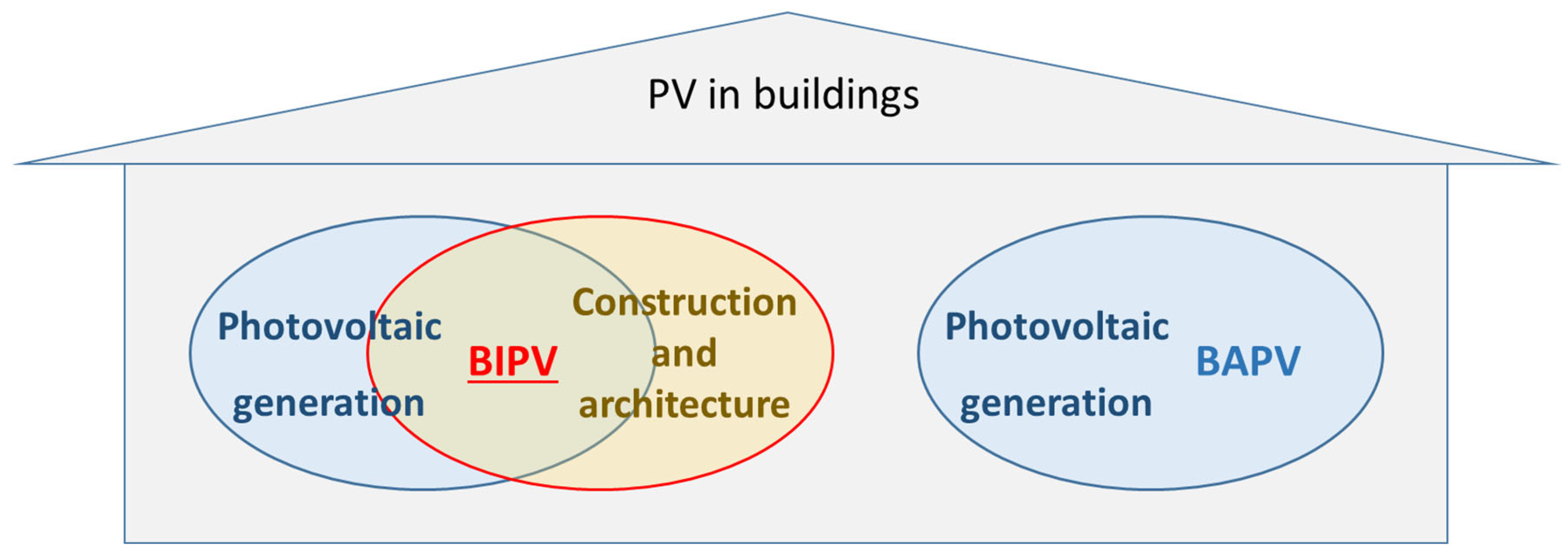
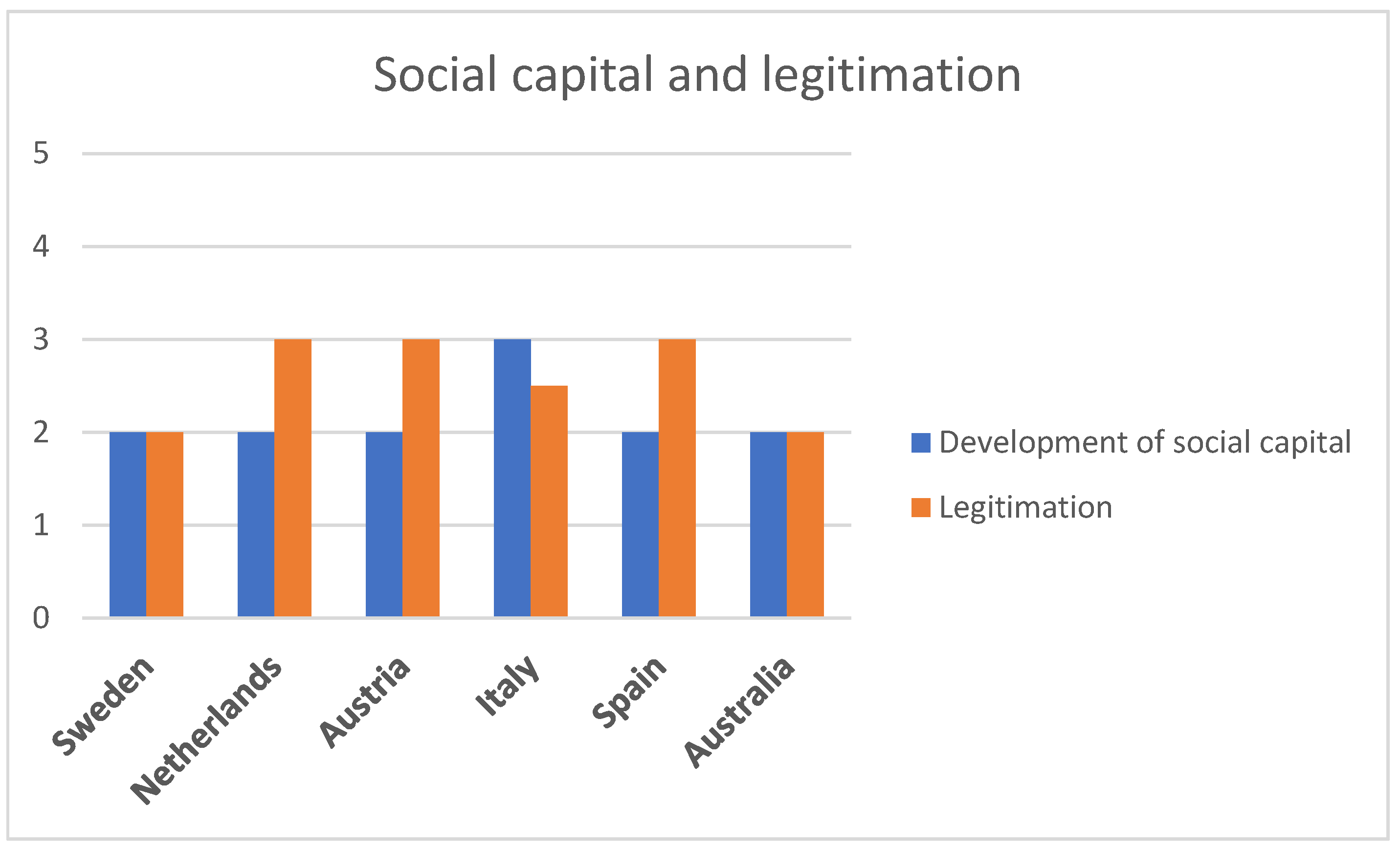

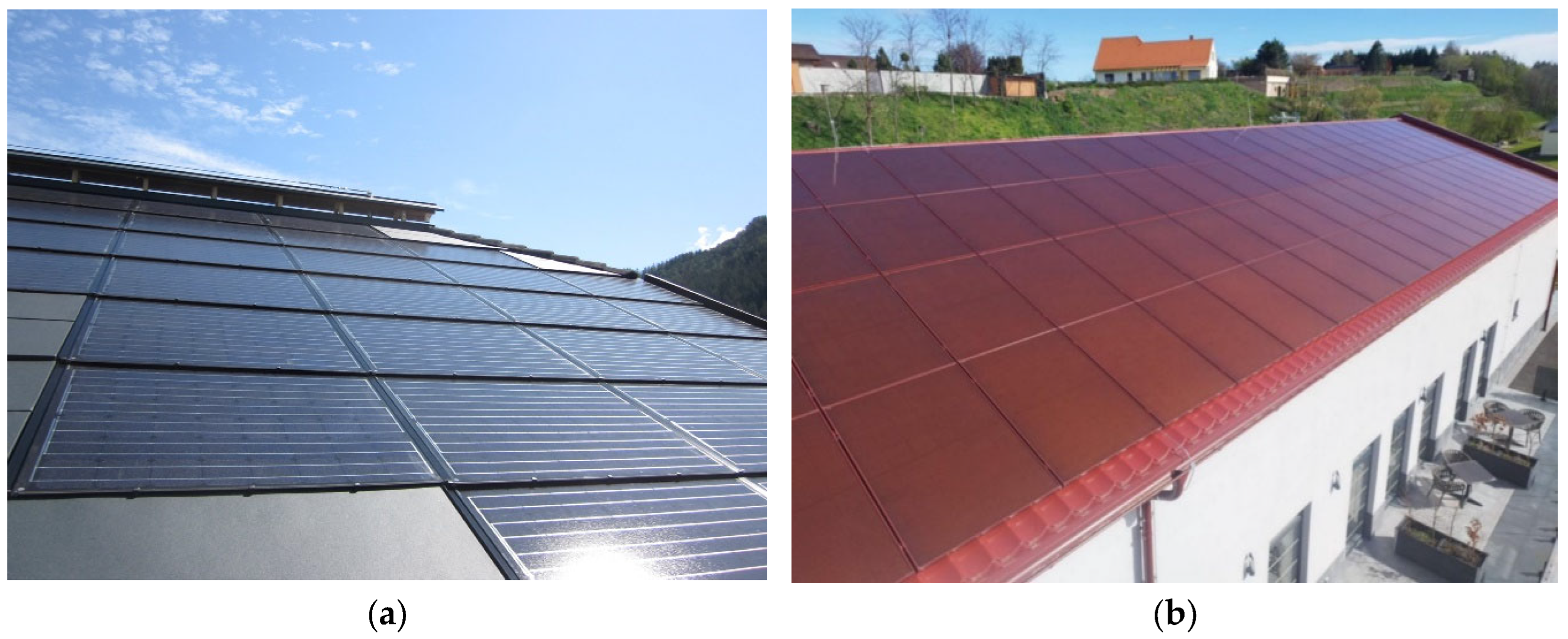
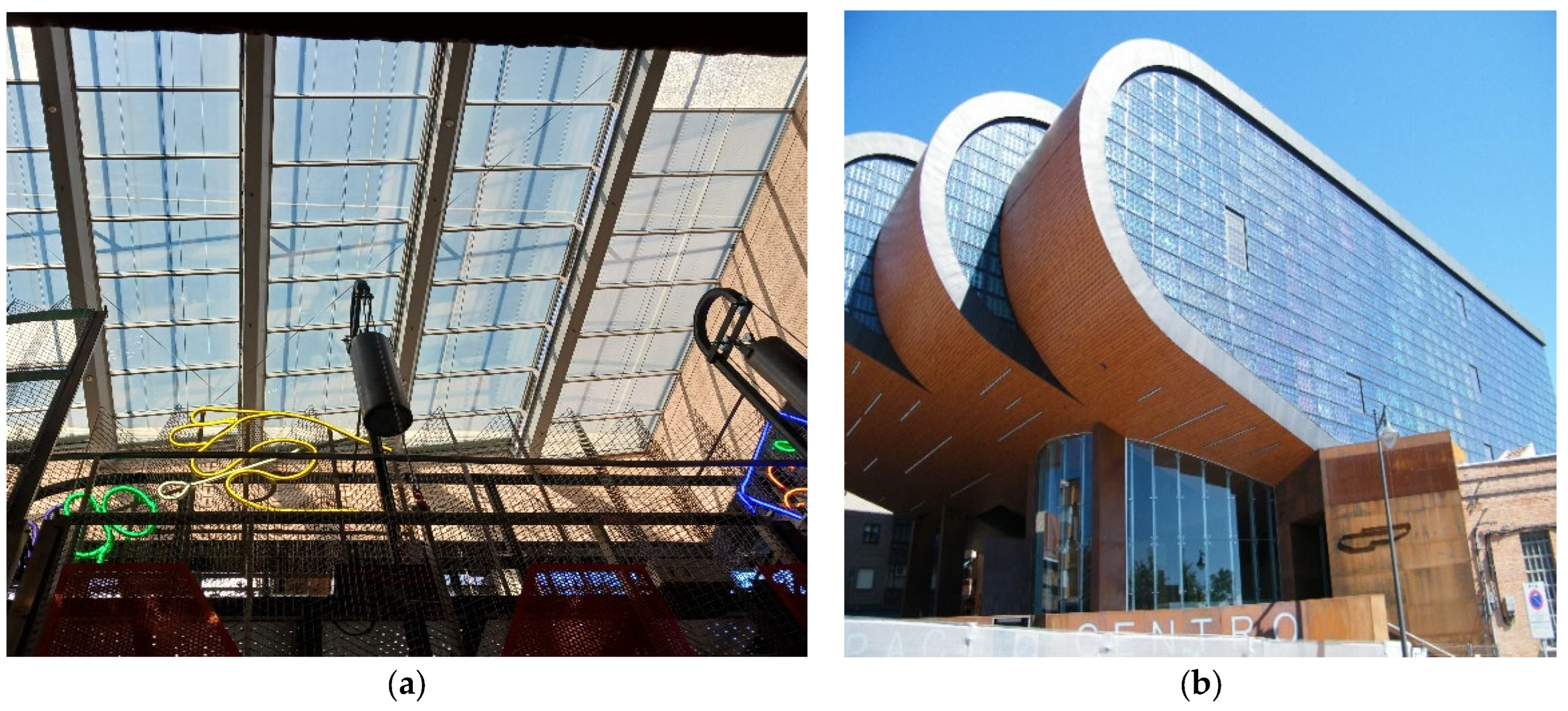
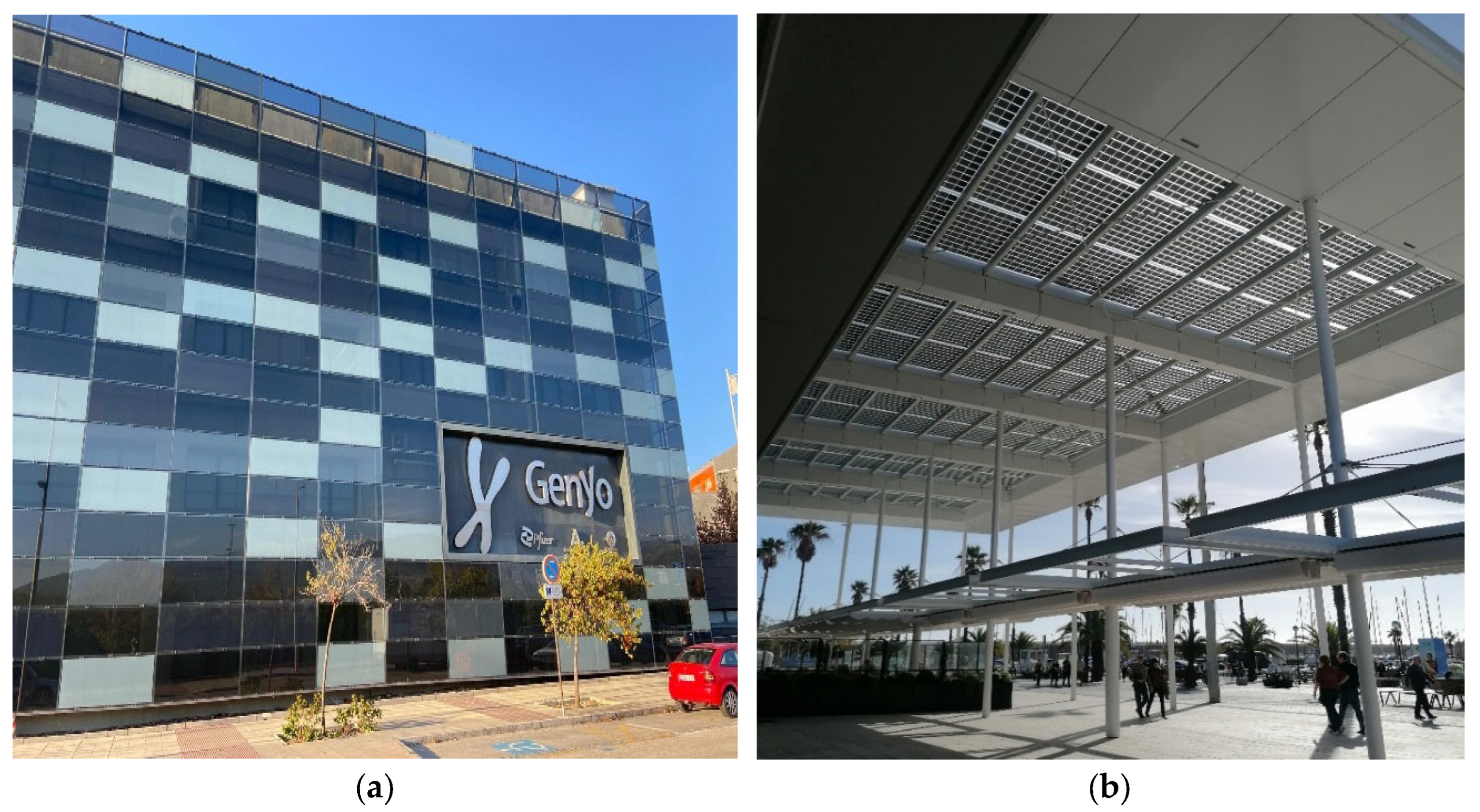
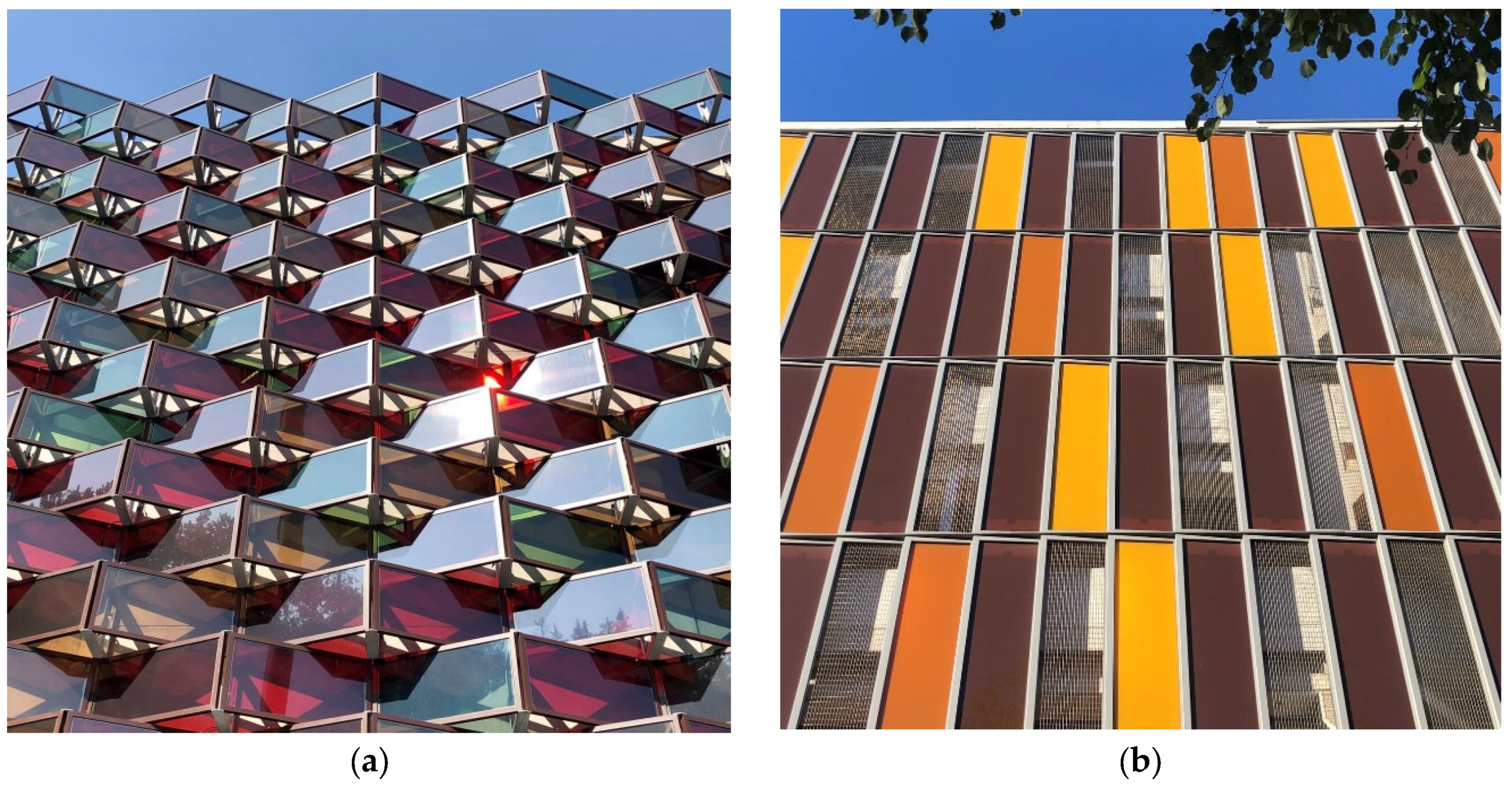
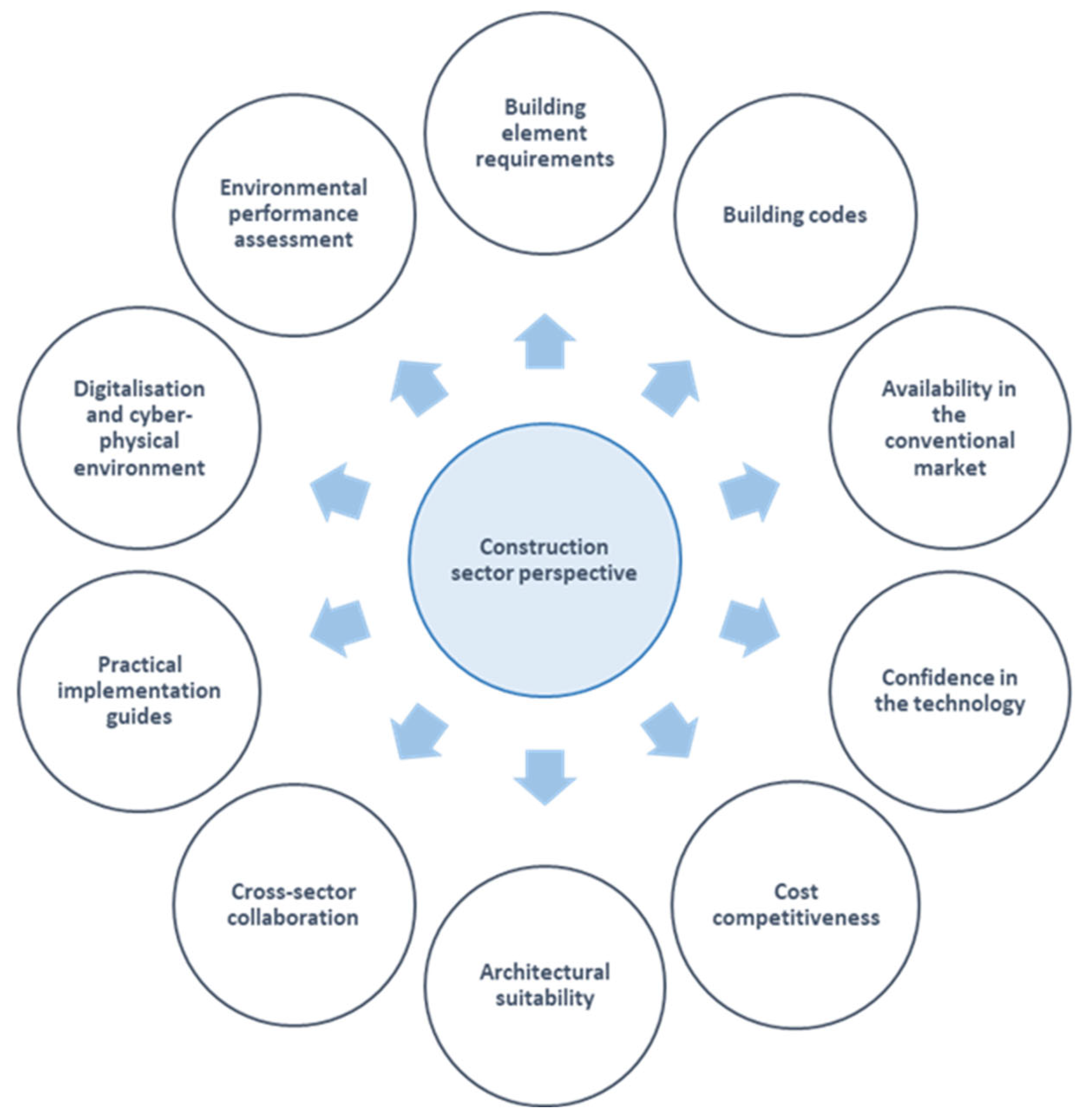
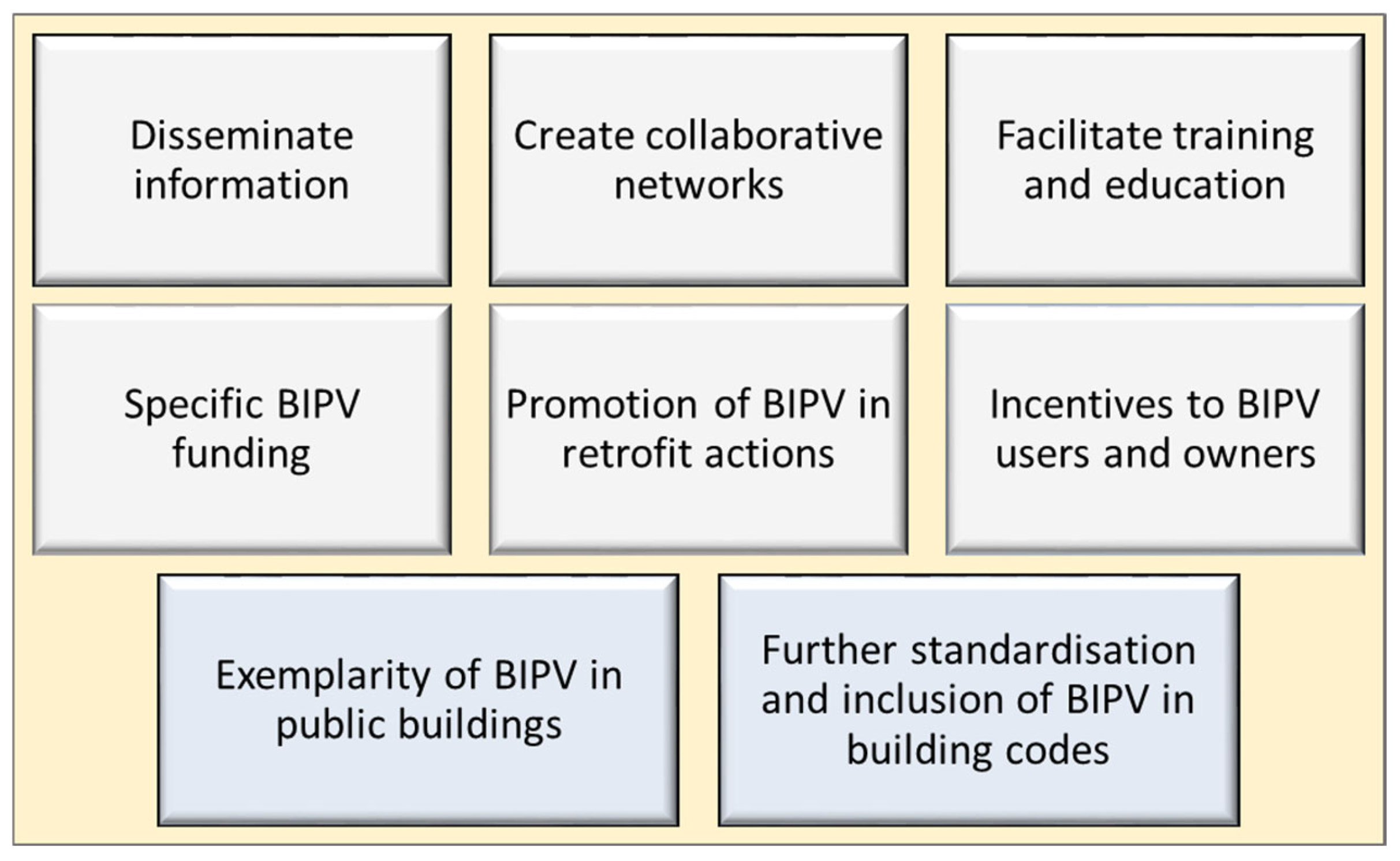
| TIS Function | Main Questions for the Analysis |
|---|---|
| Knowledge development | Is the appropriate knowledge available or being developed? |
| Knowledge dissemination | Is that knowledge reaching the right actors, including feedback from demonstration projects to academics? |
| Entrepreneurial experimentation | Do enough actors try new technologies or applications (startups and diversification)? |
| Resource mobilisation | Can actors find sufficient and appropriate… (1) … skilled professionals? (2) … financing? (3) … related products, services and infrastructure? |
| Development of social capital | Are social relations between people good enough, and is there sufficient mutual trust and understanding? |
| Legitimation | Is there sufficient acceptance of BIPV technologies, actors and regulations amongst relevant stakeholders? Is BIPV a trusted solution? |
| Guidance of the search | Is there enough market promise to guide industry actors towards (a variety of) BIPV solutions? Also, compared to other adjacent innovation systems? |
| Market formation | Do the following actors sufficiently contribute to market creation? (1) government (regulations, tax rules, support schemes), (2) entrepreneurs (market push), (3) lead customers (market pull) |
Disclaimer/Publisher’s Note: The statements, opinions and data contained in all publications are solely those of the individual author(s) and contributor(s) and not of MDPI and/or the editor(s). MDPI and/or the editor(s) disclaim responsibility for any injury to people or property resulting from any ideas, methods, instructions or products referred to in the content. |
© 2025 by the authors. Licensee MDPI, Basel, Switzerland. This article is an open access article distributed under the terms and conditions of the Creative Commons Attribution (CC BY) license (https://creativecommons.org/licenses/by/4.0/).
Share and Cite
Martín-Chivelet, N.; van Noord, M.; Tilli, F.; Yang, R.J.; Weerasinghe, N.; Daun, E.; Baggini, A. BIPV Market Development: International Technological Innovation System Analysis. Buildings 2025, 15, 3011. https://doi.org/10.3390/buildings15173011
Martín-Chivelet N, van Noord M, Tilli F, Yang RJ, Weerasinghe N, Daun E, Baggini A. BIPV Market Development: International Technological Innovation System Analysis. Buildings. 2025; 15(17):3011. https://doi.org/10.3390/buildings15173011
Chicago/Turabian StyleMartín-Chivelet, Nuria, Michiel van Noord, Francesca Tilli, Rebecca Jing Yang, Nilmini Weerasinghe, Elin Daun, and Angelo Baggini. 2025. "BIPV Market Development: International Technological Innovation System Analysis" Buildings 15, no. 17: 3011. https://doi.org/10.3390/buildings15173011
APA StyleMartín-Chivelet, N., van Noord, M., Tilli, F., Yang, R. J., Weerasinghe, N., Daun, E., & Baggini, A. (2025). BIPV Market Development: International Technological Innovation System Analysis. Buildings, 15(17), 3011. https://doi.org/10.3390/buildings15173011







